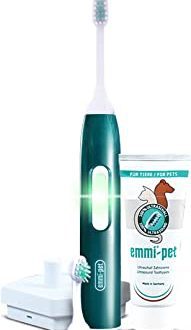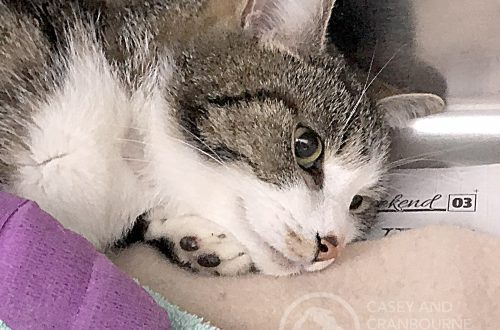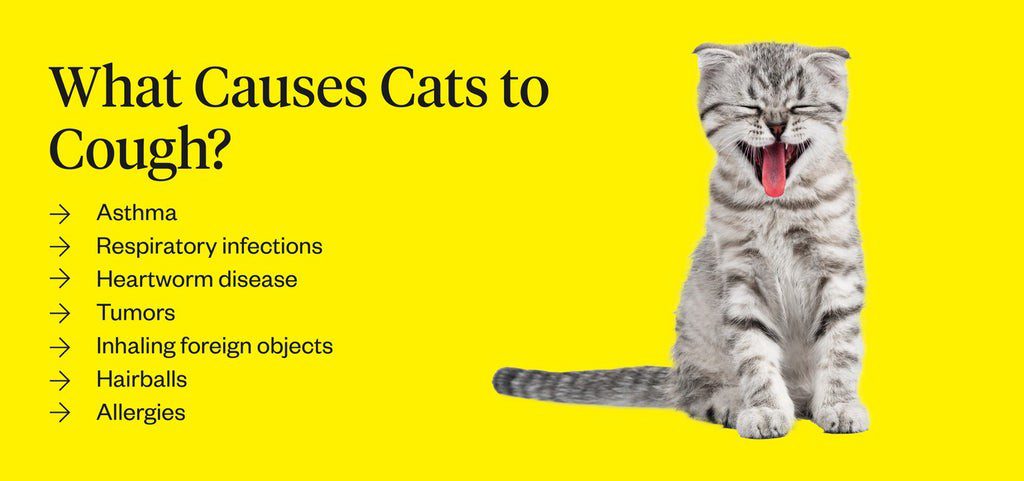
The cat coughs and wheezes – the causes of coughing, and what to do?
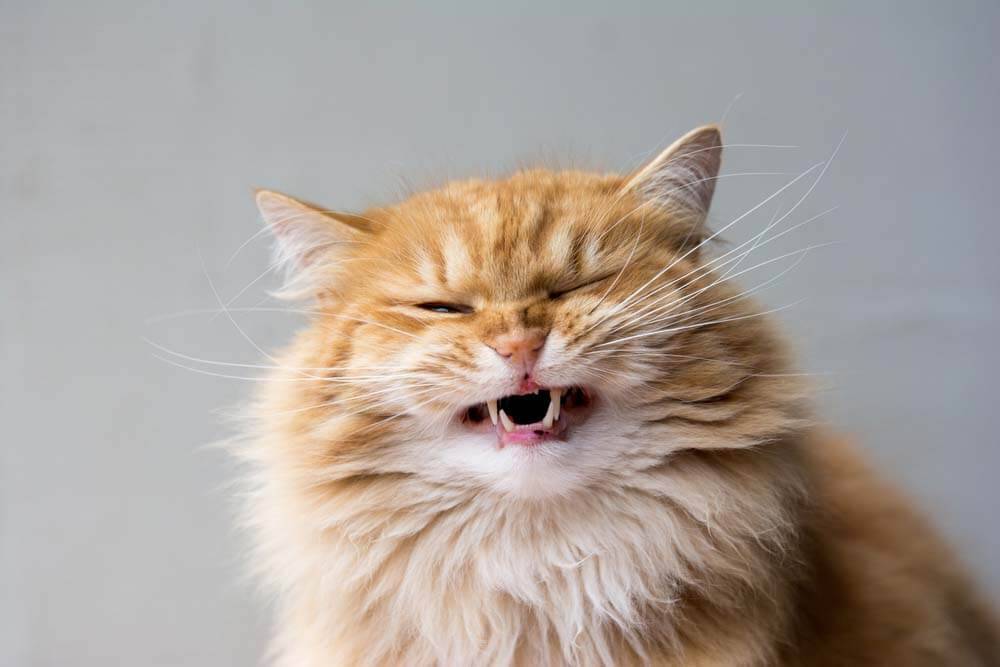
Contents
How do cats cough?
The cough reflex occurs due to irritation of special receptors (mechanoreceptors or chemoreceptors) that are located throughout the respiratory tract. Therefore, just by the presence of a cough, it is sometimes difficult to say whether it is a consequence of a problem in the lower or upper respiratory tract.
When coughing begins, the pet takes a certain position: stretches its neck as far forward as possible, presses against the floor and makes sounds that can be mistaken for vomiting. He can open his mouth wide, stretch his tongue, and there are also sharp movements of the chest and abdomen.
Why does a cat cough – the main reasons
Causes of cough can be both physiological and pathological factors. If a cat coughs rarely and for a short time (once every few months or even less), then this may be normal.
If we talk about pathology, then they distinguish dry cough and wet. Dry sounds like wheezing and does not contain mucous secretions. A wet cough resembles a crackling or gurgling and is accompanied by mucus. At night, it accumulates in the bronchi, and therefore, after sleep, the cough may be more pronounced.
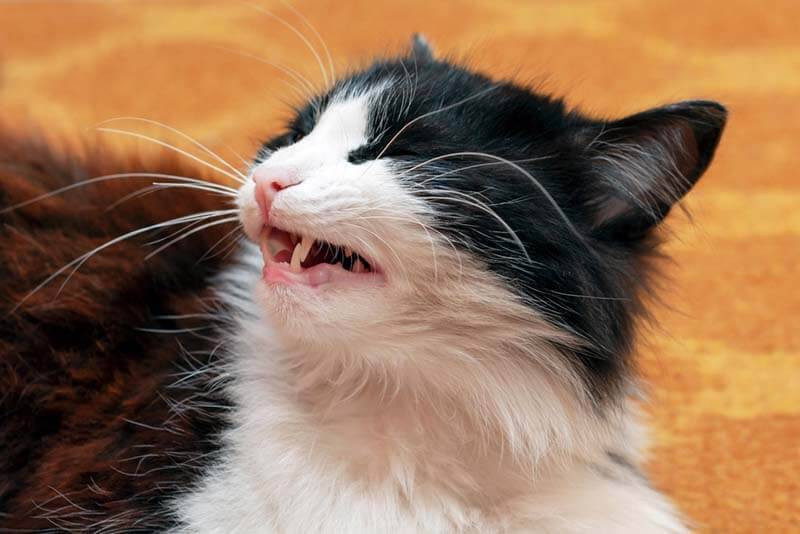
As noted above, sometimes owners may confuse vomiting with coughing. Therefore, it is first necessary to determine exactly what an attack is. If there is no visible discharge (foam, pieces of undigested food or foreign objects), then this is most likely a cough reflex.
Many brachycephalic breeds (Persian, Exotic Shorthair, Himalayan, Scottish, etc.) have the so-called reverse sneezing with a characteristic grunting or snoring sound, which can also be confused with a cough. But this process is normal for animals.
I would also like to draw attention to the fact that coughing in dogs is the main symptom of heart failure. In relation to cats, this is just a misconception, which, unfortunately, is still common among owners of breeds predisposed to heart pathologies (for example, Sphynx, British). It is important to remember that with heart disease, the leading symptoms in cats will be shortness of breath and heavy hoarse breathing.
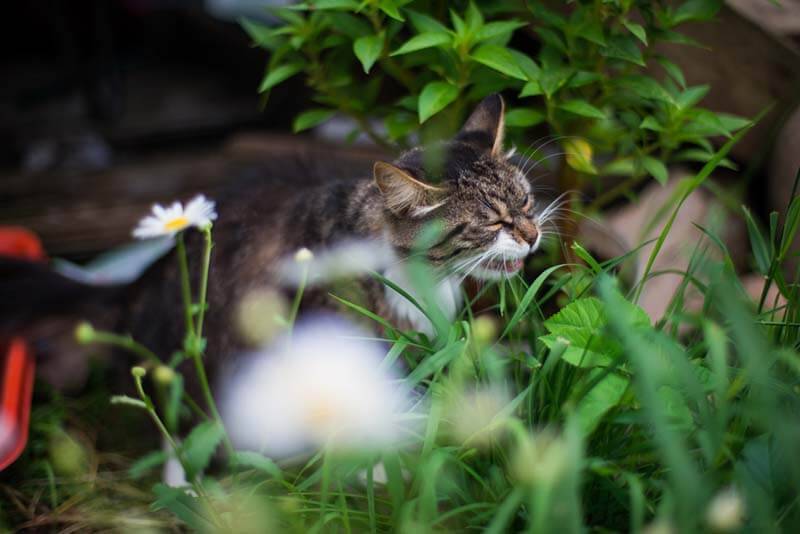
Asthma
A common disease that causes swelling and narrowing of the airways. Often with asthma, there is a situation where the cat coughs, as if he wants to vomit. This is due to the release of mucus when coughing, which the pet then swallows back. Although there is no cure for asthma, its symptoms can be relieved with medication. The trigger factors that cause asthma include: plant pollen, dust mites, various strong-smelling substances (tobacco smoke, perfumes, aerosols).
Respiratory infections
They are caused by viral, bacterial, fungal pathogens and are accompanied by inflammation, swelling of the tissues of the respiratory system, accumulation of mucus in the bronchi. With these diseases, the pet, as a rule, coughs and sneezes heavily.
Parasitosis
There are several diseases in which helminths can be localized directly in the lungs (elurostrongylosis, capillariasis, toxocariasis) or be in the chambers of the heart (dirofilariasis), provoking a cough attack.
Pleural effusion
This is an abnormal accumulation of fluid in the chest cavity, which causes irritation of the lung tissue and, as a result, is accompanied by bouts of coughing. It occurs for a variety of reasons: complication of infection, neoplasm in the chest, heart failure, trauma.
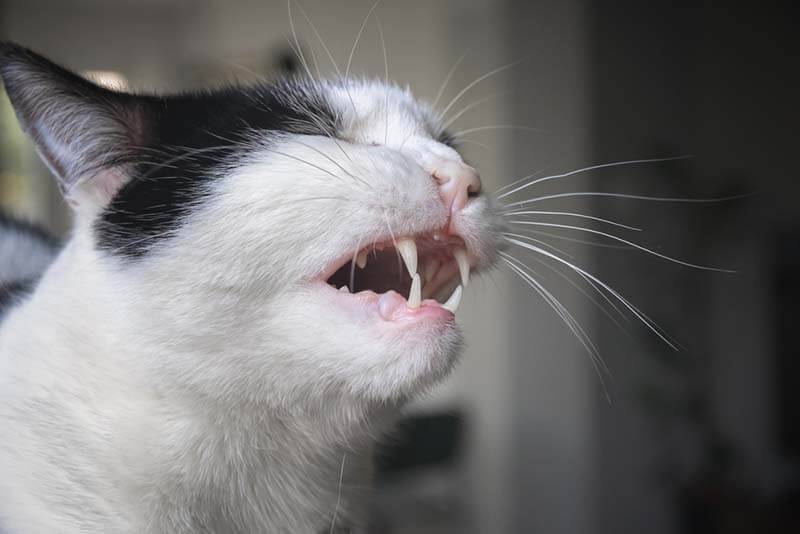
Neoplasms (tumors), polyps
They are found in both elderly and young animals in various parts of the respiratory system. They are benign and malignant in nature and can partially or completely block the airways.
Injury
Physical, chemical, or thermal injury to the respiratory tract (eg, bad fall from a height, car accident).
Foreign objects
When a cat coughs as if she is choking, this may be due to the ingestion of small particles of food, grass and other objects into the respiratory tract. Animals will have wheezing, sneezing, restlessness, and attempts to reach foreign objects with their paws.
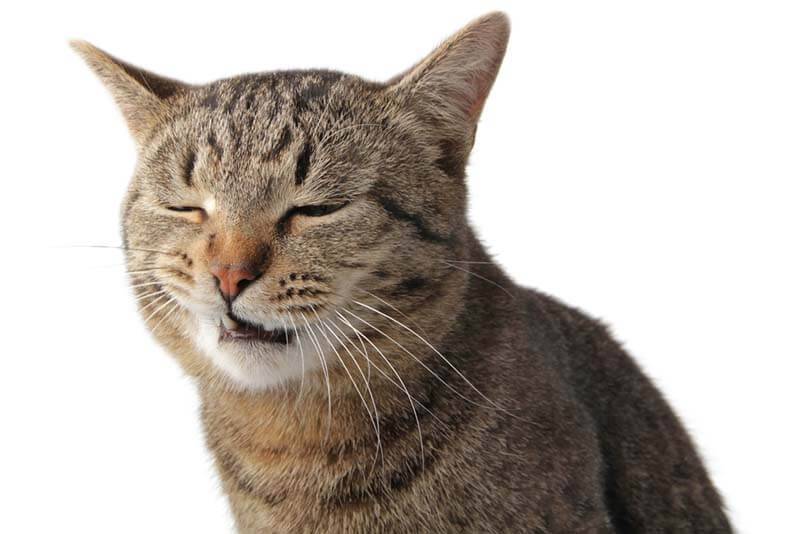
Diagnostics
To diagnose all the causes of coughing and wheezing described above, an anamnesis is first taken. This is an important part of making a diagnosis. The veterinarian should provide a clear picture of what is happening – what the pet eats, whether it is vaccinated or not, whether it was treated for parasites, when the first symptoms began, whether there are vomiting, etc. After collecting an anamnesis and examination, a number of special laboratory and instrumental studies are prescribed.
The main ones are: auscultation (listening) of the lungs with a phonendoscope; clinical blood test and biochemical examination of blood serum (if necessary); analysis of feces for helminth eggs (performed to exclude the presence of parasites in the intestines); specific tests for the presence of bacteria and viruses (for example, the polymerase chain reaction (PCR) method – to detect herpes infection, calicivirus, mycoplasmosis, bordetellosis).
Instrumental diagnostics includes: chest x-ray, ultrasound (ultrasound) of the heart and lungs, computed tomography (CT) and magnetic resonance imaging (MRI). An important stage in the diagnosis is bronchoscopy with the collection of material for cytological and bacteriological examination. If there is an effusion in the chest cavity, it is also subjected to cytology and bacteriological examination.
All procedures that require immobilization of the pet are performed under sedation or anesthesia, and the cat usually stays at the veterinary clinic for several hours.
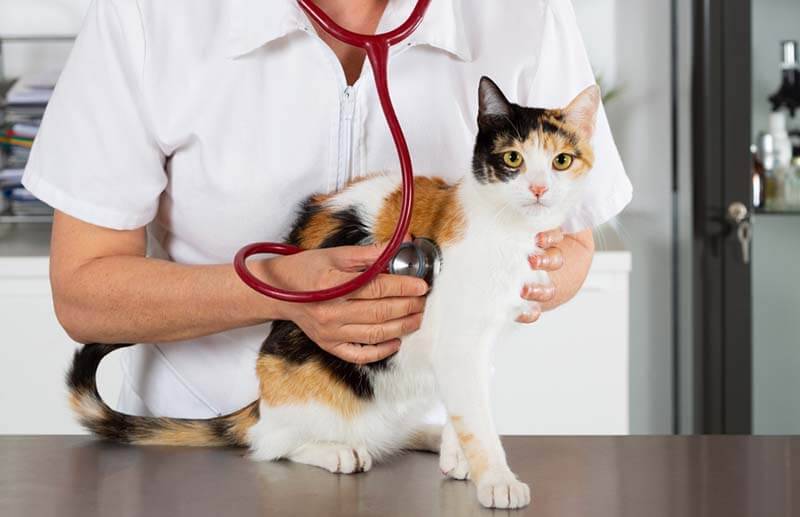
How and how to treat a cough in a cat
Treatment options vary depending on the condition of the animal and the cause of the cough. Therefore, it is better to immediately contact the veterinary clinic and not self-medicate at home.
What can you do at home?
With a pronounced cough in a cat, it is necessary to remain calm and reduce stressful situations for her to a minimum. Excessive excitement or anxiety of the animal can aggravate the condition. It is worth limiting physical activity (exercise or movement) as much as possible and contact a veterinary clinic.
It is not recommended to give your cat any medications without first consulting a veterinarian. This is especially true for human preparations, as some of them contain toxic ingredients (for example, ibuprofen, paracetamol).
It is also necessary to film coughing fits in order to show the veterinarian.
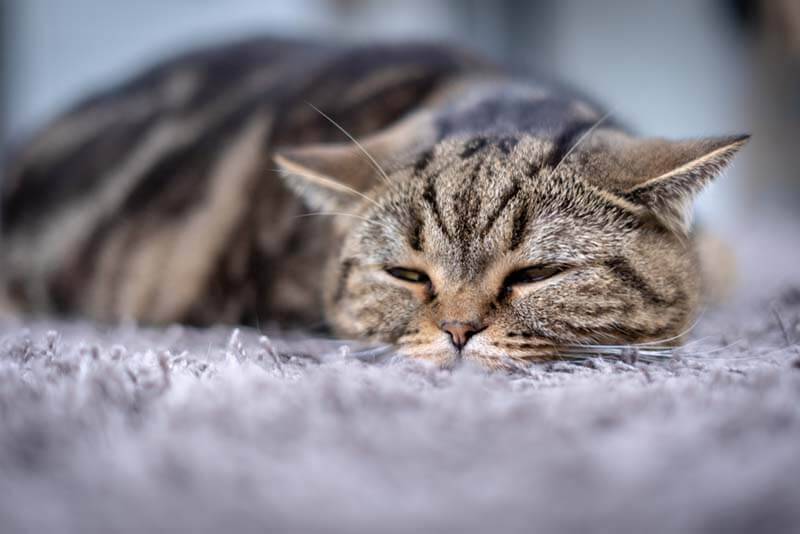
Veterinary help
If the cat’s respiratory disease is caused or complicated by a bacterial infection, treatment may include a course of antibiotics. This is especially important for diagnosed pneumonia.
If a pet has been diagnosed with asthma, two main types of medications are used to treat it: corticosteroids to control inflammation and bronchodilators to widen the airways. These drugs are inhaled, oral or injectable. Inhalants are preferred. Giving them to a cat with an inhaler is simple and effective when using special devices – spacers for animals (for example, the Aerokat spacer). They ensure that the cat can inhale the full dose of medication.
If the cause of the cough is a parasitic infection, then the patient will be prescribed drugs for deworming (that is, against worms).
As a symptomatic therapy for many reasons, expectorants and mucolytics are widely used to increase the rate of secretion in the bronchial tree. The selection of the dosage, duration of treatment and the drug in all cases is made by a veterinarian.
Diagnosed cough in a cat with wheezing, which occurs against the background of a respiratory tract injury, may require immediate surgical intervention. Any delay can lead to asphyxia (suffocation) and death.
In the presence of neoplasms in the organs of the respiratory system, a consultation with a veterinary oncologist is required. After all the features of the pathological process are clarified, the animal may be shown chemotherapy, anesthesia, or surgical intervention is recommended.
Cats with acute respiratory failure should be placed in a hospital in oxygen chambers for round-the-clock monitoring until the condition stabilizes.
Regardless of the cause of the cough, your pet will need follow-up exams to make sure the problem is resolved and treatment is adjusted.
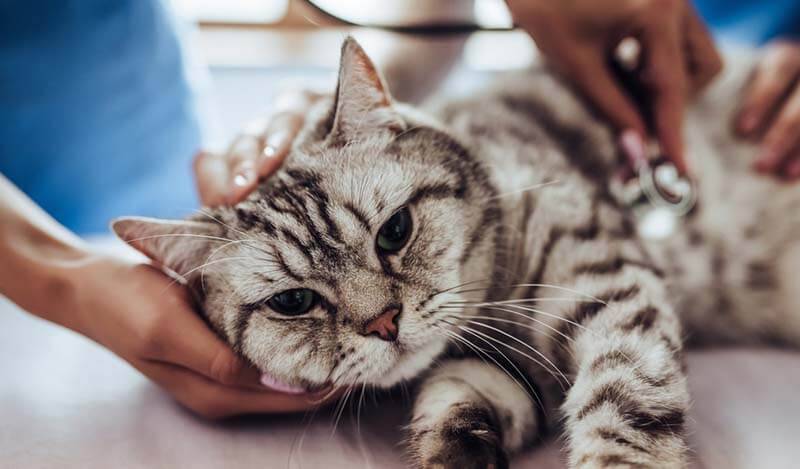
Prevention
If the cat’s cough is associated with infectious diseases, then they can be prevented in advance by vaccination, which is usually started from 2 months of age. In the future, the animal is revaccinated annually.
Quarterly antiparasitic treatments for cats are an important part of your pet’s preventative health care program. This includes both treatment from internal parasites – worms, and from external ones – fleas, ticks.
Regular health checks (medical examinations) at the veterinary clinic, combined with annual vaccinations, will help to identify the main problems at the very beginning.
It is required to carry out wet cleaning in a timely manner, especially in places where a lot of dust accumulates. The apartment must be well ventilated and at the same time protect the pet from drafts.
It is necessary to keep any dangerous, small objects that cats can chew, inhale or swallow out of reach. It is also advisable to minimize the use of air fresheners, perfumes and other potential allergens.
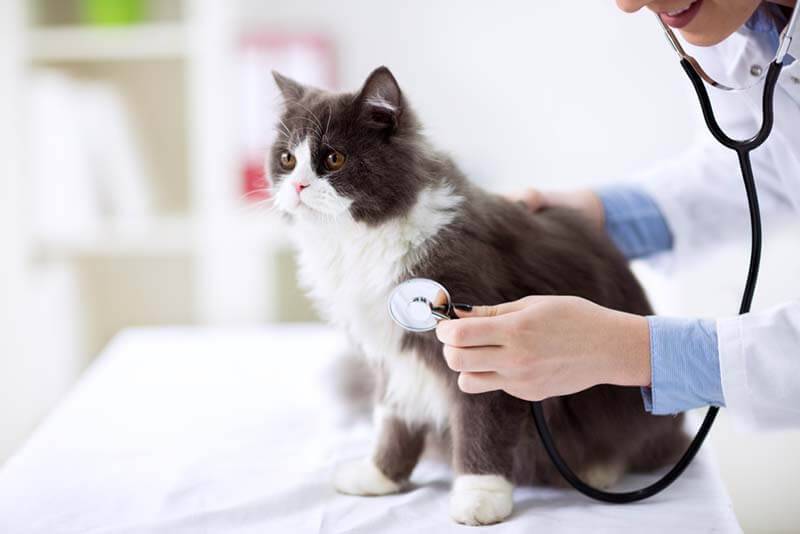
Cough in Cats Essentials
Coughing is a protective reflex necessary to rid the airways of foreign particles, mucus, microbes and other irritants.
Common causes of pathological cough include: asthma, infectious diseases, parasites, ingress of foreign objects, neoplasms in the organs of the respiratory system, trauma.
To make a diagnosis, it is necessary to take an anamnesis, a physical examination of the pet, instrumental and laboratory diagnostics (X-ray and ultrasound of the chest, blood tests, stool examination, bronchoscopy, etc.).
The goal of treatment is to eliminate the underlying cause of the cough, to reduce the severity of symptoms.
Prevention of cough includes: vaccination and deworming, annual medical examination, minimizing the use of strong smelling substances and maintaining cleanliness.
Answers to frequently asked questions
December 18 2021
Updated: December 20, 2021



